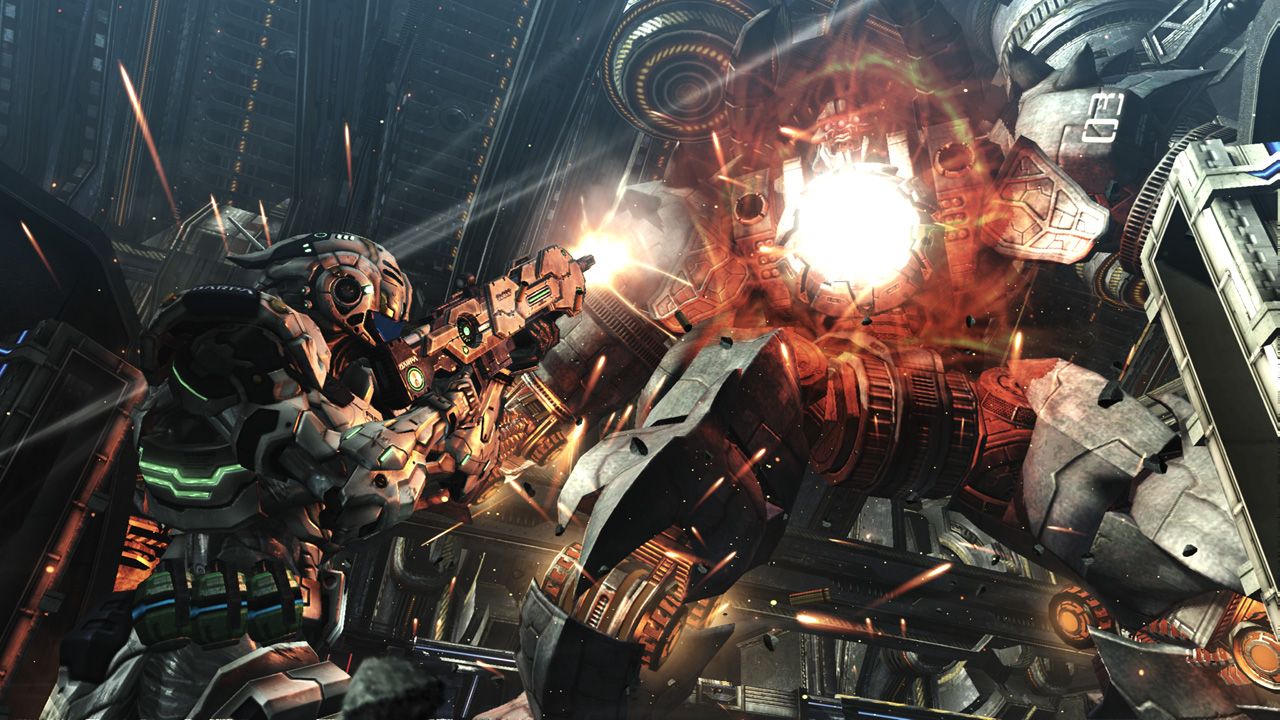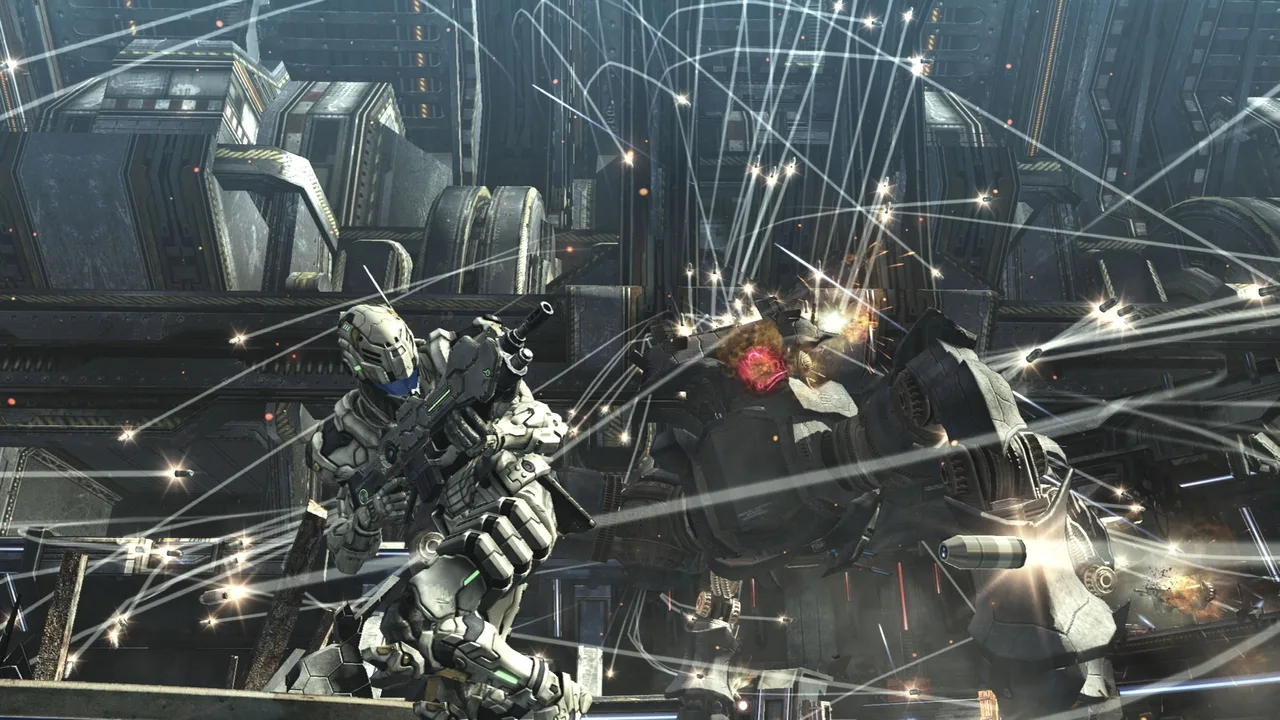A Forgotten Sci-Fi Gem
There are games that come and go, and then there are games that leave a mark—games that introduce mechanics so fluid and satisfying that you can’t help but wonder, Why didn’t Vanquish get a sequel? One such game is Vanquish, a sci-fi action shooter developed by the legendary PlatinumGames and directed by Shinji Mikami, the mastermind behind Resident Evil 4. Published by SEGA in 2010, Vanquish delivered one of the most exhilarating third-person shooter experiences of its time, packed with breakneck speed, satisfying gunplay, and an innovative take on the cover shooter genre.

Despite its cult following and undeniable quality, Vanquish never received a follow-up, leaving fans hungry for more. With today’s advancements in technology and the rise of high-speed action games, now is the perfect time to bring back this underappreciated gem. Let’s break down what made Vanquish special and how a sequel could take its mechanics to the next level.
Gameplay – Gear Up Your ARS Suit Sam

When Vanquish launched, the third-person shooter genre was dominated by slow, cover-based combat, thanks to games like Gears of War and Uncharted. PlatinumGames took that formula and injected it with an insane dose of speed and style. Vanquish wasn’t about hiding behind cover for long—it was about using it as a brief pit stop before boosting across the battlefield, unleashing a relentless barrage of firepower.
Each mission in Vanquish was designed to push players to master its unique mechanics. Instead of simple “run-and-gun” gameplay, the game encouraged you to think fast, adapt to different enemy types, and use every tool at your disposal. Battles felt dynamic, thanks to varied objectives, massive boss fights, and clever enemy placement that forced you to utilize movement and strategy rather than brute force.

At the heart of Vanquish‘s gameplay was the Augmented Reaction Suit (ARS), worn by protagonist Sam Gideon. This high-tech exoskeleton allowed for a range of abilities that redefined third-person shooting:
- Boost Mechanic: The ability to slide across the battlefield at high speed, dodging bullets and closing gaps with cinematic finesse.
- Bullet Time (Augmented Reality Mode): Activated when near death or manually triggered, slowing time for precise headshots, mid-air enemy takedowns, or last-second evasions.
- Melee Combat: Limited but powerful melee attacks that could instantly destroy enemies—though at the cost of overheating the suit.
This suit transformed Vanquish from a typical cover shooter into an all-out, high-speed battlefield where standing still meant death. A potential sequel could expand on this by introducing more mobility options, enhanced melee mechanics, and customizable ARS suit abilities to further diversify playstyles.

At its core, Vanquish still retained a solid cover system that was on par with the best shooters of its time. Players could seamlessly take cover, peek out to fire, and move strategically across the battlefield. However, what set it apart was the ability to instantly transition from cover-based shooting to high-speed combat, giving players far more control over the flow of battle.
The thruster-based movement system added another layer of depth. Unlike traditional cover shooters where mobility was limited, Vanquish allowed players to boost across the battlefield at insane speeds, repositioning quickly and outmaneuvering enemies in ways no other shooter allowed at the time.
Vanquish nailed shooting mechanics with its Blade System, which allowed Sam to store three weapon types at a time, transforming them in real-time rather than carrying a physical arsenal. The gunplay felt impactful, with weapons like the Heavy Machine Gun, Lock-On Laser, and Disc Launcher offering variety in both playstyle and spectacle.
The best part? The destruction system. Enemies didn’t just fall when shot—they had limbs blown off, sparked as their circuits malfunctioned, and exploded into metal scrap, making every kill feel weighty and satisfying.
A sequel could expand this further by adding more destructible environments, weapon upgrades, and specialized abilities tied to different weapons, giving players even more freedom in how they approach combat.
The game featured four primary weapon slots, and players could swap their arsenal with weapons dropped by enemies. This meant combat was never static—you were constantly adapting your loadout based on the situation.

Each weapon had a distinct feel and purpose:
- Shotgun – Devastating at close range, especially when combined with bullet-time for cinematic, high-impact takedowns.
- Sniper Rifle – Ideal for picking off high-priority targets from cover, allowing players to dismantle large mechs by targeting weak points.
- Assault Rifle – A reliable all-rounder for mid-range combat, keeping the pressure on enemies while dodging and boosting around the battlefield.
- Heavy Weapons – Rocket launchers, laser cannons, and other powerful weapons that could turn the tide of battle when used strategically.
The grenade system and EMP blasts added even more tactical depth, letting players disable enemy machines, flush out enemies from cover, or create explosive chain reactions.
Combat encounters in Vanquish were anything but repetitive. The game constantly changed the scale and intensity of battles, throwing everything from small squads of foot soldiers to massive robotic war machines at the player. Boss fights were particularly impressive, often requiring quick reflexes, pattern recognition, and effective weapon management.
One of the most thrilling moments was taking down pilot-controlled mechs, where skilled sniping could turn an already chaotic battle into pure carnage as the disabled machines crashed into the battlefield.
Unlike many other cover-based shooters of its time, Vanquish never felt sluggish or repetitive. The game encouraged fast, aggressive play, rewarding players who mastered movement, dodging, and high-speed decision-making. It felt like an action game first and a shooter second, which made it stand out even among genre giants like Gears of War or Call of Duty.

While Vanquish delivered a near-perfect action-shooter experience, it also left the door wide open for a potential sequel. Imagine a deeper upgrade system, expanded melee combat options, and even more customization for Sam’s ARS suit—the potential for a next-gen Vanquish is limitless.
Sound, OST & Voice
Action games live and die by their sound design, and Vanquish was no exception. Every bullet, explosion, and mechanical whir felt impactful, reinforcing the chaos of battle. The soundtrack, composed by Masafumi Takada (Killer7, No More Heroes), blended high-energy electronic beats with orchestral elements, perfectly matching the intensity of the gameplay.

A Vanquish 2 could further elevate the soundscape by incorporating more dynamic audio cues, adaptive music that reacts to gameplay, and a deeper emphasis on voice acting, perhaps giving Sam more personality and interactions to build a richer narrative experience.
Graphics & Art Style

Despite being over a decade old, Vanquish still looks impressive, thanks to its clean, high-tech aesthetic and fluid animations. The game’s futuristic cityscapes, massive space stations, and highly detailed enemy mechs gave it a distinct look that set it apart from other shooters of its time.
The robotic enemies in Vanquish were well animated, with intricate destruction details that made every battle visually rewarding. Limbs could be blasted off, exposing their inner wiring, and explosions sent debris flying realistically across the battlefield.
A sequel could push this even further by incorporating more diverse enemy types, improved environmental destruction, and even smoother animations using next-gen hardware.
Why Vanquish Deserves a Sequel & What It Could Improve

Despite its brilliance, Vanquish had a few shortcomings. The main campaign was relatively short, clocking in at around six hours. While the challenge modes offered some extra replayability, the lack of deeper customization, substantial endgame content, and RPG elements meant the experience ended too soon. A sequel could expand on the core gameplay while preserving Vanquish‘s identity by introducing:
A sequel could expand the core gameplay while keeping its identity intact by:
- Customization & Upgrades: Players could modify their ARS suit, upgrade weapons, and unlock new abilities, allowing for personalized playstyles and progression.
- Enhanced Melee Combat: Expanding hand-to-hand combat with combo chains, different fighting styles, and counter moves would add another layer of depth.
- A Richer World & Narrative: More developed side characters, a deeper storyline, and expanded lore could make the Vanquish universe more immersive.
- More Mission Variety & Replayability: Open-ended combat encounters, optional side missions, and larger set-piece battles could keep the gameplay fresh.
- Multiplayer or Co-op Mode: Imagine Vanquish’s high-speed combat in an online multiplayer setting—team-based objective modes or competitive speed battles could add endless replayability.
PlatinumGames has the expertise to make this happen. With games like NieR: Automata and Astral Chain, they’ve shown they can mix deep mechanics with stylish combat. A Vanquish sequel with a bigger, bolder vision could easily become one of the best action games of the modern era.
Bring Back Vanquish!

With the current gaming landscape embracing high-speed action games more than ever, the time is right for Vanquish to return. Whether it’s a full-fledged sequel, a spiritual successor, or even a proper remaster with expanded content, fans deserve to see Sam Gideon boost across battlefields once again.
Shinji Mikami and PlatinumGames created something truly special—a game that didn’t just follow trends but set a new standard for action shooters. Vanquish wasn’t just a game; it was a statement—a reminder that shooters can be fast, fluid, and stylish while still being mechanically deep.
It’s time to bring that energy back.
SEGA, PlatinumGames—give us Vanquish 2!
Description
Vanquish is a game with unique shooter and action gameplay dynamics, setting itself apart from traditional action shooters in many ways. It’s a title with immense potential that could reach even greater heights with sequels. When it was released in 2010, it stood out with its innovative shooter elements like the cover system, distinct movement mechanics, and boost feature. These gameplay aspects combined with fast-paced, action-packed combat, responsive enemy AI, and well-designed levels kept the experience engaging and intense.Positives
- Shooter Elements
- Variety of Combat Options
- Graphics and Visuals
- Satisfying Enemy Reactions
- Intense Boss Fights
- Sound and Soundtracks
Negatives
- Limited weapon options
- Some repetitive mission design
- Restricted environments
Review Breakdown
- Gameplay & Content 4/5
- Sound & Voice 4/5
- Story & Storytelling 4/5
- Visual & Graphics 5/5
